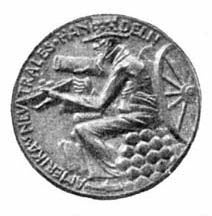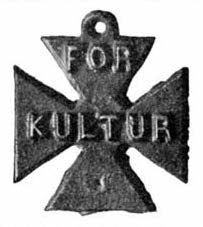This article was published in Scientific American’s former blog network and reflects the views of the author, not necessarily those of Scientific American
In the Great War, it became vital for participants to influence public opinion in support of the war effort. Official propaganda blurred with commercial exploitation of patriotism to produce medals and medallions that fulfilled a purpose of denigrating the enemy, justifying the war or trying to affect sentiments in neutral countries. Our article from 100 years ago today points out:
“The satirical medal existed in the Middle Ages and ran the gamut from simple puns to deplorable exhibitions of rage at enemies. The medal as a medium for satire and hate did not break out very strong until the present war was well launched, then all the flood gates of passion were let loose, and we have sublimated hate struck in enduring form.”

German medal mocks United States neutrality by showing Uncle Sam busily selling armaments to the Allies. Credit: Scientific American, March 10, 1917
On supporting science journalism
If you're enjoying this article, consider supporting our award-winning journalism by subscribing. By purchasing a subscription you are helping to ensure the future of impactful stories about the discoveries and ideas shaping our world today.
The “Lusitania medal” was produced privately in Munich, Germany, to celebrate the point of view that the ocean liner was carrying war material (notice how the deck of the sinking ship is stuffed with cannons) and was therefore a legitimate target for U-boat attack. The propaganda effort backfired when the British simply reproduced the medal and accused the Germans of celebrating an atrocity: there were, after all, 128 dead Americans among the other civilians drowned.
A German medal mocked the idea of American neutrality by showing Uncle Sam sitting on a throne of cannonballs in front of a cannon. And Germany’s principal decoration for braver, the iron cross, was recreated by the English as an ornament for a dog collar—a very disparaging move in the ongoing philosophical struggle between German “Kultur” and Church of England Christianity.

English dog collar ornament mocks German “Kultur” and also the distinctively German bravery medal, the iron cross. Credit: Scientific American, March 10, 1917
For more information about propaganda:
The Lusitania medal is a fascinating milestone in an evolving propaganda struggle. Phil Dutton, curator at the Imperial War Museum in England, has a good explanation here: http://www.iwm.org.uk/history/how-a-german-medallion-became-a-british-propaganda-tool
The British Library has some thoughtful and engaging articles on propaganda and World War I by modern historians such as Jo Fox of Durham University and also David Welch of the University of Kent: https://www.bl.uk/world-war-one/articles/
-
The views expressed are those of the author and are not necessarily those of Scientific American.
Our full archive of the war, called Scientific American Chronicles: World War I, has many articles from 1914–1918 on propaganda and public perception of the First World War. It is available for purchase at www.scientificamerican.com/products/world-war-i/